Christopher L. Simons
Interactive Ant Colony Optimisation (iACO) for Early Lifecycle Software Design
Jun 23, 2014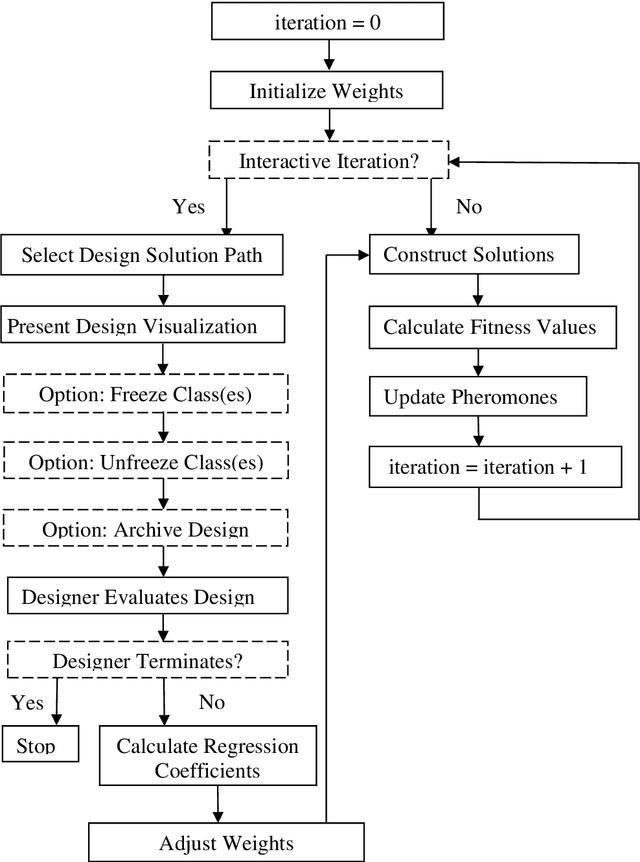

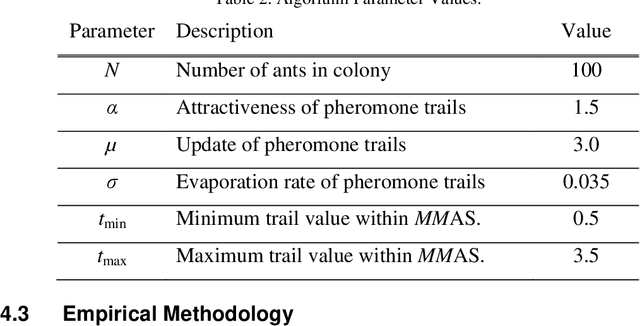
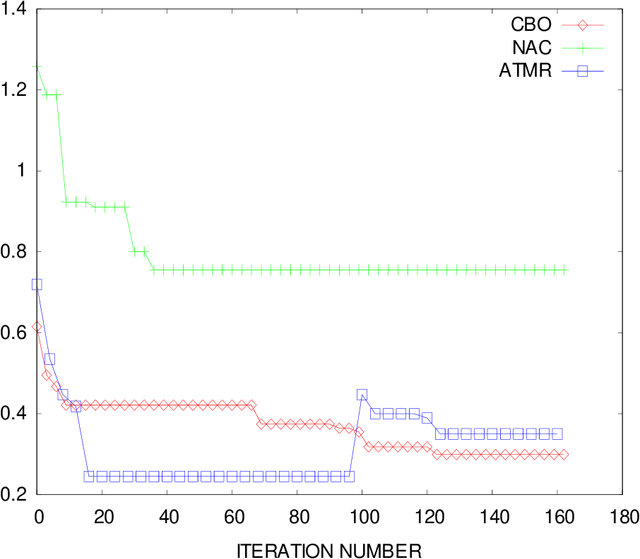
Abstract:Software design is crucial to successful software development, yet is a demanding multi-objective problem for software engineers. In an attempt to assist the software designer, interactive (i.e. human in-the-loop) meta-heuristic search techniques such as evolutionary computing have been applied and show promising results. Recent investigations have also shown that Ant Colony Optimization (ACO) can outperform evolutionary computing as a potential search engine for interactive software design. With a limited computational budget, ACO produces superior candidate design solutions in a smaller number of iterations. Building on these findings, we propose a novel interactive ACO (iACO) approach to assist the designer in early lifecycle software design, in which the search is steered jointly by subjective designer evaluation as well as machine fitness functions relating the structural integrity and surrogate elegance of software designs. Results show that iACO is speedy, responsive and highly effective in enabling interactive, dynamic multi-objective search in early lifecycle software design. Study participants rate the iACO search experience as compelling. Results of machine learning of fitness measure weightings indicate that software design elegance does indeed play a significant role in designer evaluation of candidate software design. We conclude that the evenness of the number of attributes and methods among classes (NAC) is a significant surrogate elegance measure, which in turn suggests that this evenness of distribution, when combined with structural integrity, is an implicit but crucial component of effective early lifecycle software design.
Elegant Object-oriented Software Design via Interactive, Evolutionary Computation
Oct 03, 2012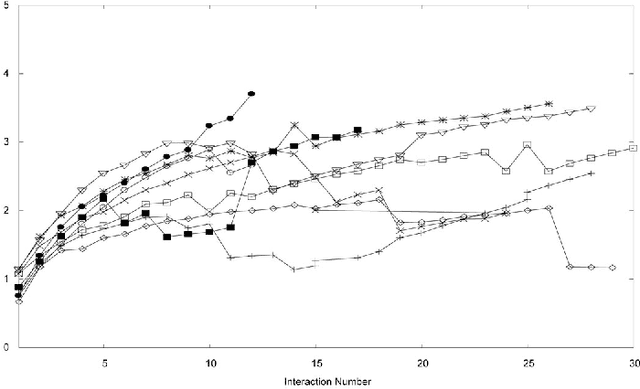
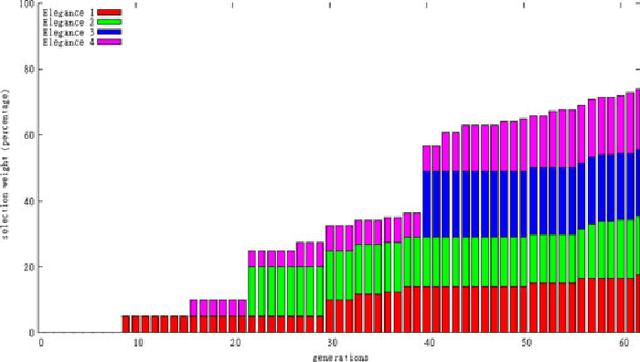

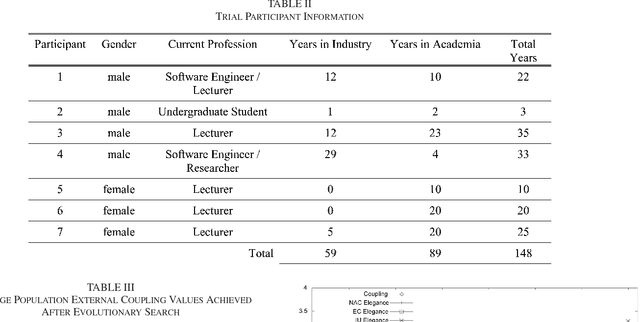
Abstract:Design is fundamental to software development but can be demanding to perform. Thus to assist the software designer, evolutionary computing is being increasingly applied using machine-based, quantitative fitness functions to evolve software designs. However, in nature, elegance and symmetry play a crucial role in the reproductive fitness of various organisms. In addition, subjective evaluation has also been exploited in Interactive Evolutionary Computation (IEC). Therefore to investigate the role of elegance and symmetry in software design, four novel elegance measures are proposed based on the evenness of distribution of design elements. In controlled experiments in a dynamic interactive evolutionary computation environment, designers are presented with visualizations of object-oriented software designs, which they rank according to a subjective assessment of elegance. For three out of the four elegance measures proposed, it is found that a significant correlation exists between elegance values and reward elicited. These three elegance measures assess the evenness of distribution of (a) attributes and methods among classes, (b) external couples between classes, and (c) the ratio of attributes to methods. It is concluded that symmetrical elegance is in some way significant in software design, and that this can be exploited in dynamic, multi-objective interactive evolutionary computation to produce elegant software designs.
 Add to Chrome
Add to Chrome Add to Firefox
Add to Firefox Add to Edge
Add to Edge